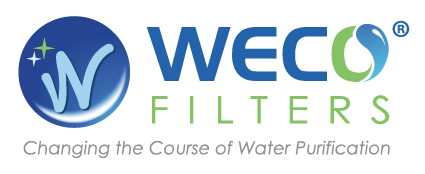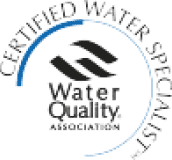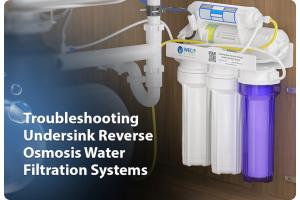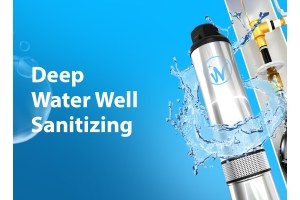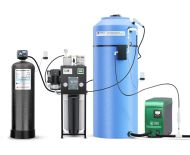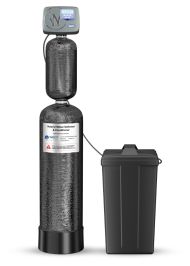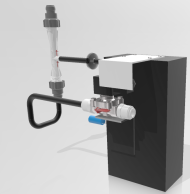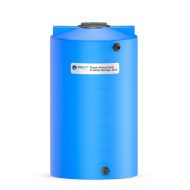Whole House Reverse Osmosis (RO) Setup
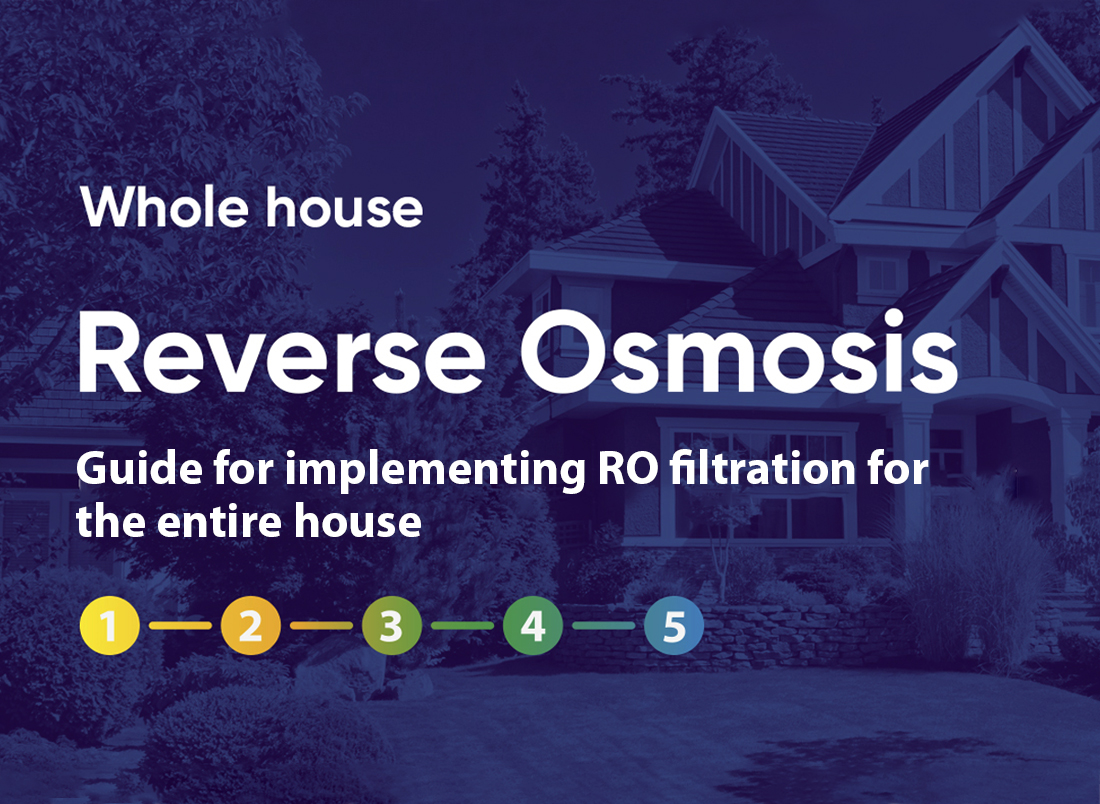
Reverse osmosis or RO, as it is commonly referred to, is the process of purifying water with the use of a permeable membrane to remove unwanted substances from the water. These substances range from contaminants, chemicals, minerals, and impurities. This process is used to turn poor quality water into clean usable water. Whole house reverse osmosis is exactly as it sounds. It is a water purification system that purifies the entire water supply for the house. With whole house reverse osmosis, there are numerous factors to consider when choosing the proper system. This article will cover some of the basic setups and help individuals determine their water purification needs.
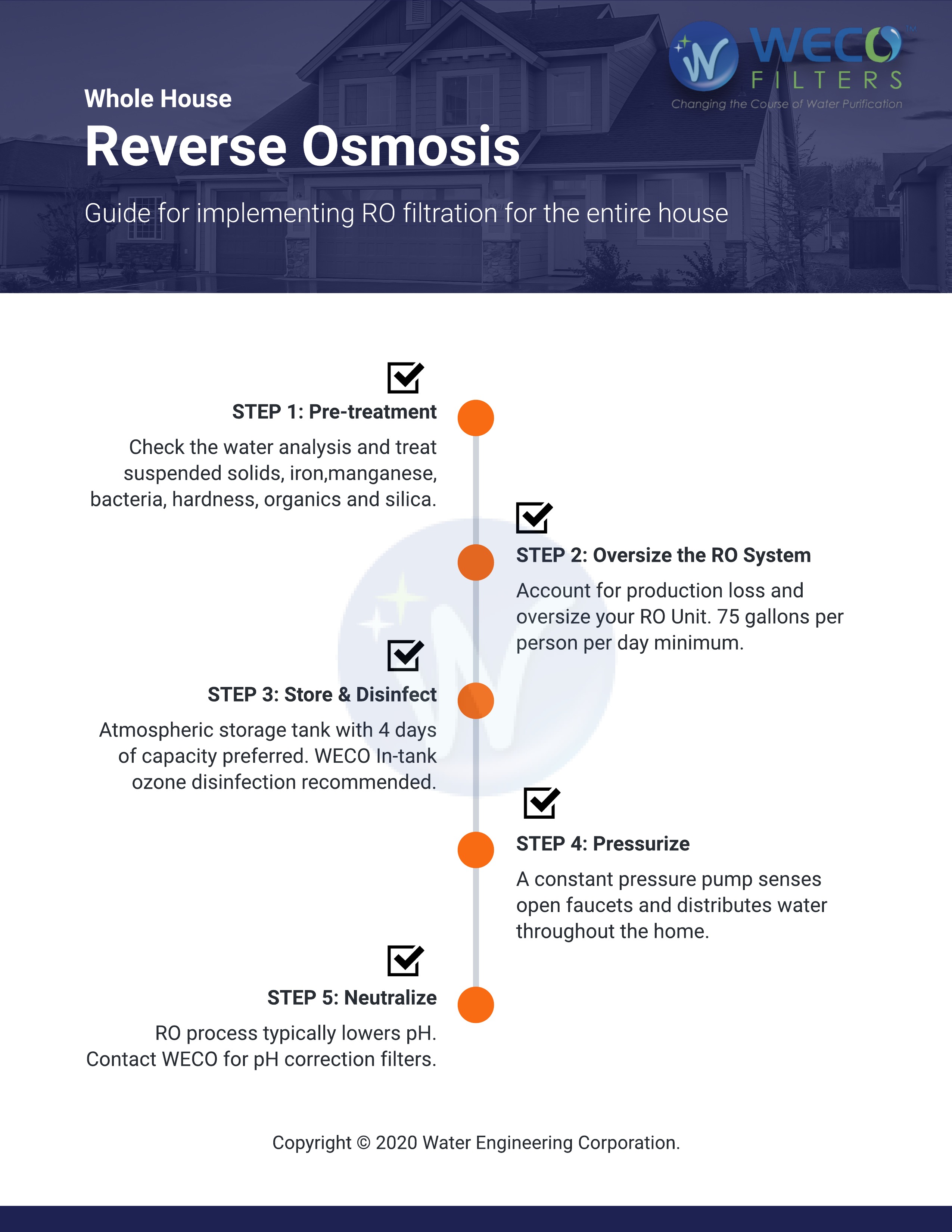
Who needs whole house reverse osmosis?
The first step to determine your water purification needs is to obtain a comprehensive water quality test. This test will determine the quality of your incoming water. It will specify the concentrations of the contaminants present in the water to help you determine the ideal types of purification your home needs. Water quality tests specify the contaminant concentrations of microbiological, metals, physical factors, inorganic, and organics in your water. For example, houses furnished with city water may need less water purification than houses furnished with well water. City water is treated to meet EPA water standards whereas well water is untreated and could contain a multitude of substances. Below we will breakdown both city water and well water purification needs.
City Water
If your house is furnished with city water then a whole house reverse osmosis is usually overkill.
Due to the fact that city water is treated to comply with the Environment Protection Agency standards a lot of your purification needs are already taken care of. Unless a documented contamination is present in the water that calls for a higher level of purification then a whole house water filtration system will not be needed. Instead, a small under-sink type RO system should be used for drinking water. Also, a hybrid whole house filter / water softener for chlorine/chloramine reduction, plus hard water treatment will fulfill your water purification needs. The benefits of these techniques are to reduce taste and odor issues from the water. Reducing Chlorine/chloramine, which is added by the city for disinfection purposes, is beneficial because it removes unwanted byproducts that form from chemical reactions between disinfectants and naturally-occurring organic matter.
Well Water
Obtaining an informational water quality report is the most critical step in determining water treatment needs when dealing with well water. This critical step will ensure you will have effective water treatment as cost-efficient as possible to deal with your water purification issues.
A majority of water issues can be fixed by single treatment or a combination of technologies such as particulate filtration, aeration, ion exchange, oxidizing agent (chlorine, ozone, peroxide, or potassium permanganate), oxidation and/or UV disinfection. Only when you have multiple challenging water issues such as elevated nitrate levels, chromium, brackish water TDS, arsenic...ect. Water testing can range from DIY kits you can order or there are various companies and laboratories that can do the water testing for you. Test the water, ideally through a laboratory certified for drinking water analysis, and email us the water report at sales@wecofilters.com for quality and professional assistance with your water purification needs. The image below is a sample of a water analysis from National Laboratories.
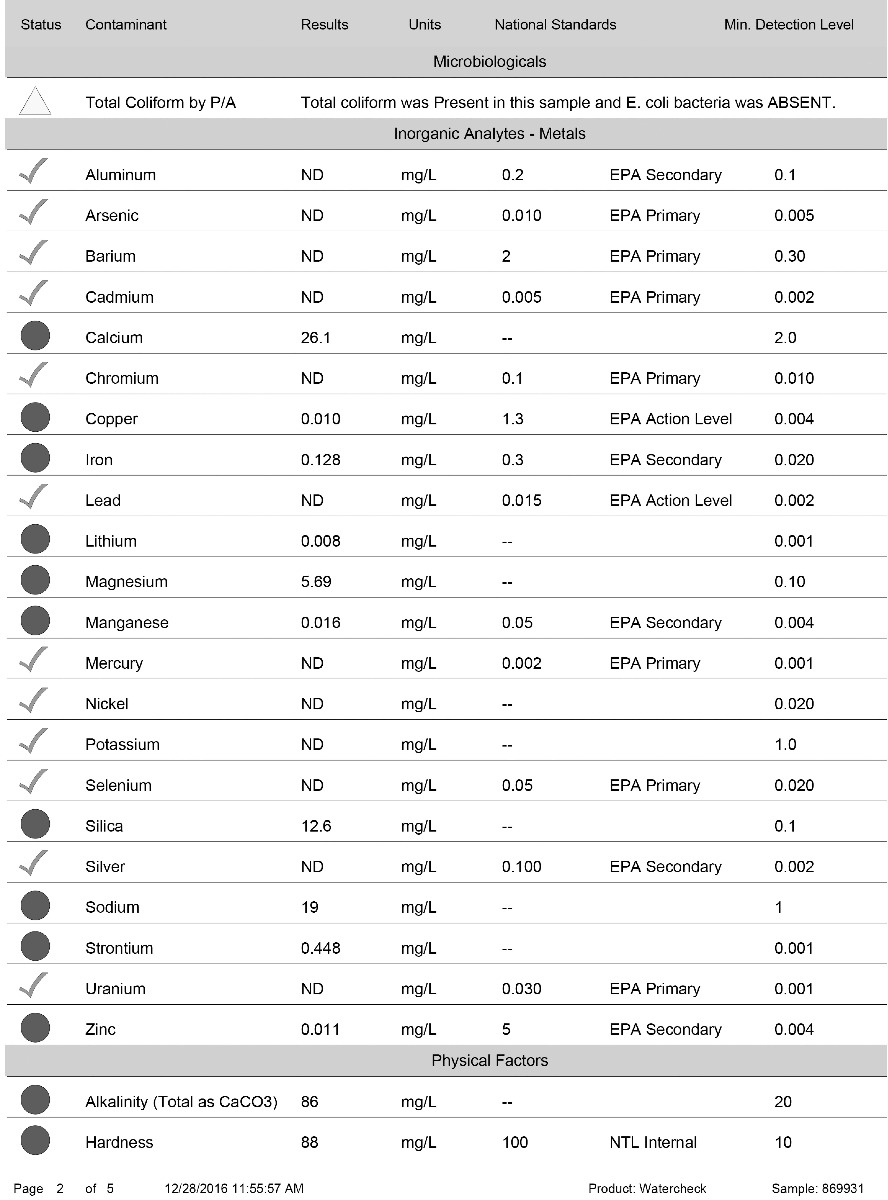
Do I need whole house reverse osmosis?
City Water
If you’re on municipal water (US), whole house reverse osmosis is almost always over kill. City water is already treated to comply with Environment Protection Agancy (EPA) standards. You don’t need to have a complete water treatment plant at home. Instead, you’re better off with a smaller undersink type RO system, just for drinking water and a whole house catalytic carbon backwash filter for chlorine/chloramine reduction plus a water softener for water hardness treatment.
Well Water
If you’re on well water, obtaining an informational water quality report is a critical step to ensure that the water treatment is efficient and cost effective to deal with your water issues. Nevertheless, most water issues can be fixed by single treatment or a combination of water treatment technologies such as particulate filtration, aeration, ion exchange, oxidizing agent (chlorine, ozone, peroxide or potassium permanganate), oxidation and/or uv disinfection. Whole House RO should only be attempted when you have multiple challenging water problems such as elevated levels of nitrate, chromium, brackish water tds, arsenic…etc. Test the water through a laboratory certified for drinking water analysis and email us the water report to sales@wecofilters.com.
What Features Does a Whole House Water Filtration System Consist Of?
Whole house reverse osmosis should only be utilized when multiple water purification challenges exist. The goal is to get effective water treatment that corrects the problems as cost-effectively as possible. The results of your water analysis will determine which features will be needed for your individualized water purification system. The following is a breakdown of each feature of a whole house water filtration system.
- Pre-treatment - This step in the purification process involves the conditioning of the water before it enters the actual RO system. This will consist of a filter or filters to remove any substances that can damage the RO system. Examples of these substances are excessive iron, manganese, chlorine, and particulate matter to name a few. In addition to filters, a water softener may also be needed which will remove hardness causing calcium and magnesium ions in the water that can cause clogging of RO membranes. The need for pre-treatment filters and a water softener will be determined by the initial water analysis.
- Booster Pump - This is a pump that will increase the water pressure before it enters the reverse osmosis membrane. RO systems require a specific amount of water pressure to operate correctly. Typical residential RO membranes are rated at 65 psi. Commercial ultra low-pressure membranes such as the AXEON HF5 series used in our ULE systems operate at 80 psi feed pressure. Most commercial-grade membranes operate at 150-225 psi pressure. The need for a booster pump is determined by the existing water pressure available to the house. If the water pressure is too low a booster pump will be required.
- Low-Pressure Switch - This switch shuts off the pump when the prefilters become clogged or when the water supply decreases to where the system will not operate.
- Membrane - The membrane is the primary filtering media within the Reverse osmosis process. RO systems use high pressure to force water through a semipermeable membrane made of materials that contain small pores. These pore sizes vary and restrict organic compounds like salt and minerals from passing through but allow water molecules to pass. These membranes are also able to filter out pathogens that have the potential to cause disease
from the water due to their restrictive properties.
-Concentration Valve - This valve regulates how much water is sent down the drain. It is also used to flush the RO membrane.
-Recycle Valve - This valve recirculates a portion of the wastewater.
-Dual TDS Meter - This is a meter that measures the feed and filtered water for total dissolved solids concentration.
- Float Conversion Kit - This is a mechanism that safeguards your RO system from hydraulic shocks that result from the sudden stop of water flow from the float valve when the holding tank is full.
-Atmospheric/Pressure Tank - These are tanks used to store the treated water from the RO membrane. Pressure tanks have a disadvantage over atmospheric tanks due to there low storage volume. A pressure tank would only be useful if the house only had one occupant or if it was used only for the storage of drinking water. Atmospheric tanks are more ideal for whole-house RO use. Ideally, the atmospheric tank should be able to hold 4 times your daily need.
-In-tank Ozone Disinfection System - This device disinfects the water in the holding tank by deactivating viruses and bacteria. It provides continuous disinfection unlike a UV, which disinfects only while the water is moving through it.
-Repressurization Pump - This pump delivers pressure to the water as it exits the holding tank because the tank does not hold pressure. This provides the water pressure to the fixtures within the house.
-Post-treatment - The post-treatment process consists of a filter or filters that remove any additional substances that were not removed by the RO membrane. This treatment also neutralizes the pH of the water exiting the RO. Water from the RO is slightly acidic. The feedwater pH is reduced by 1 pH unit after exiting the RO membrane. This process can also improve the taste of the water.
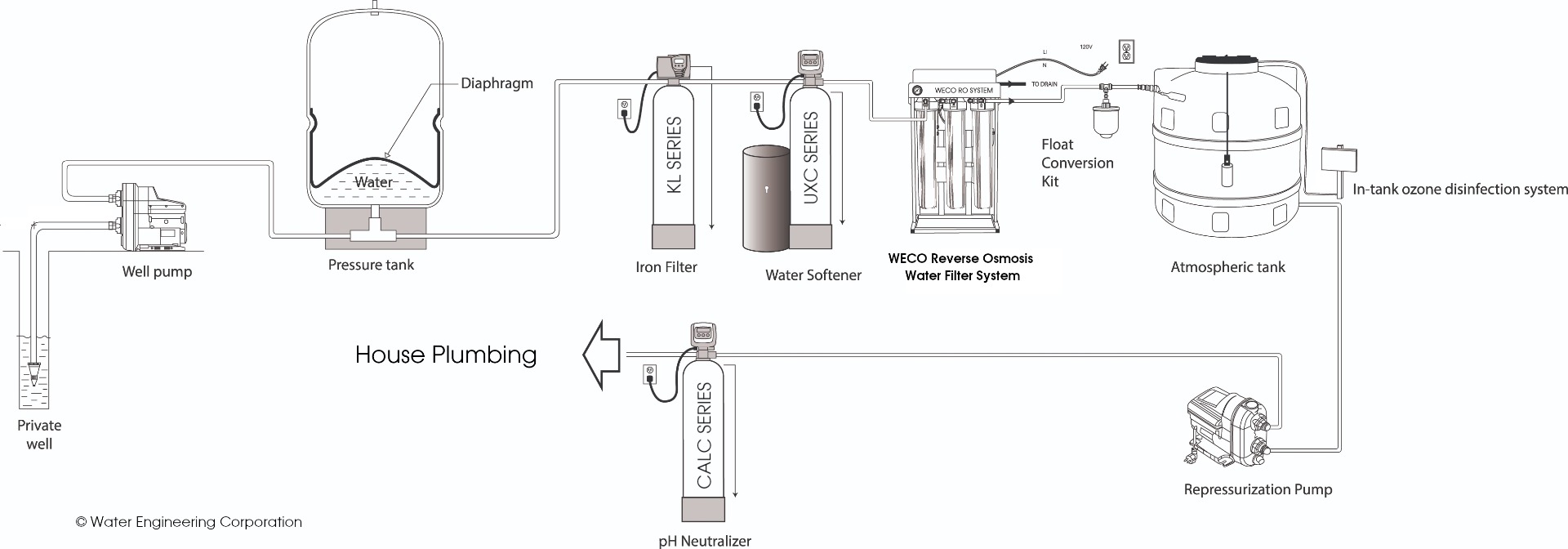
What Size RO System Do I Need?
The EPA states the average American family home uses an average of 300 gallons of water per day. We will take into account your water analysis along with other water characteristics. These characteristics involve temperature, pH, TDS (total dissolved solids), hardness, and silica to name a few. Temperature is a big factor when determining size. RO systems are rated at 77 F. For each degree the incoming water temperature is below 77 F, the RO will typically lose 2% production. Once we factor in all the water specifics then we will determine an RO size. We strive to provide optimal water purification in the most cost-efficient manner. We typically recommend purchasing an RO unit that is 3 to 4 times the capacity you require to account for fluctuating water needs. By doing this you will ensure to have enough water during winter months when production % decreases due to low water temperatures.
How do I Determine a Location to Install The RO System?
Specific steps of the RO treatment train are quite large and require considerable space. One example is the atmospheric tanks which are the largest component. They normally hold 500 plus gallons of water which will require a fair amount of space. Noise from the system can also be a determining factor for the location of the unit. An additional consideration is the ability to drain the wastewater and accommodate any leaks or spillage from maintenance. Upon reviewing your water analysis and determination of the size of the RO unit you will require then a suitable location can be determined. When the installation begins, ensure that all state and local plumbing codes are followed. Our water purification professionals are available to answer any questions you have about whole house reverse osmosis.
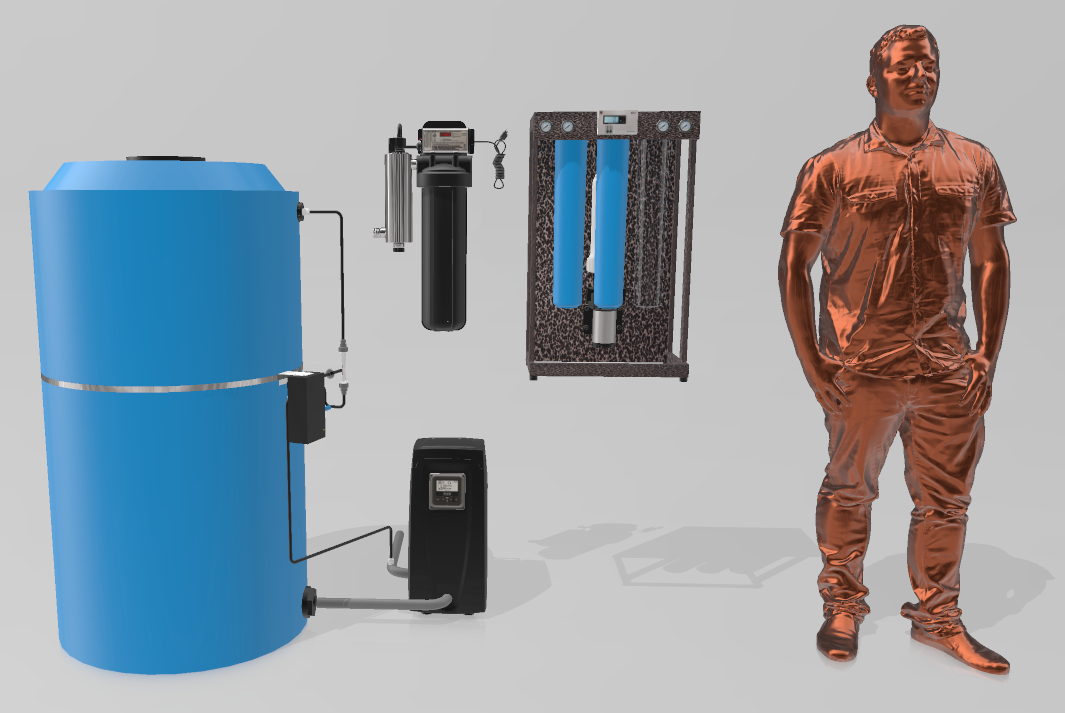
Kent RO Repair Service Madan Mahal
